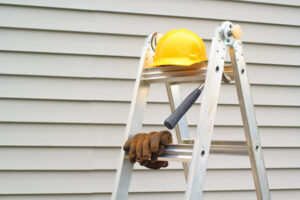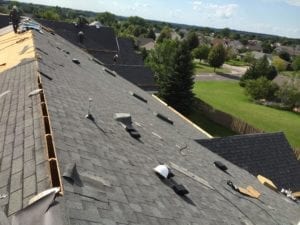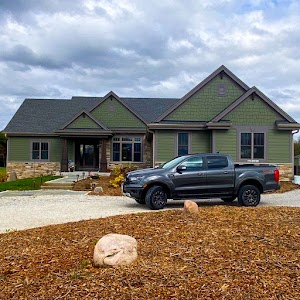When installing new siding, costs can vary based on material, property size, labor, and installation rates. Vinyl siding typically ranges from $2 to $7 per square foot, while wood siding can be $5 to $10. Fiber cement options may cost $5 to $12 per square foot, and metal can start at $7. Remember, different materials have different price ranges to fit your needs. Consider all factors to plan your budget effectively and get the best value for your home improvement project.
Factors Affecting New Siding Costs
When considering the cost of new siding, multiple factors come into play.
The type of material you choose will greatly impact the overall price, as well as the size of your property.
Labor costs and professional installation rates should also be taken into account when budgeting for your new siding project.
Material Types and Their Price Variations
Choosing the appropriate material for your new siding can greatly impact the overall cost of the project. Various materials such as vinyl, wood, fiber cement, and metal offer different price points.
Vinyl siding is often the most budget-friendly option, with prices ranging from $2 to $7 per square foot.
Wood siding, while aesthetically pleasing, can cost between $5 to $10 per square foot.
Fiber cement siding falls in the middle price range, typically costing $5 to $12 per square foot.
On the other hand, metal siding tends to be the most expensive, with prices starting around $7 per square foot and going up to $15.
Consider your budget and desired aesthetics when selecting the material for your new siding.
Size of the Property and Its Impact on Budget
Consider the size of your property as a key factor influencing the budget for your new siding project.
- Total Square Footage: The larger the area that needs siding, the more materials will be required, impacting the overall cost.
- Complexity of Design: Intricate architectural designs or multiple stories can increase labor hours and material waste, leading to higher expenses.
- Additional Features: Factors like windows, doors, and corners require extra attention and materials, adding to the total cost of the siding project.
Labor Costs and Professional Installation Rates
To accurately estimate the cost of new siding, factor in labor costs and professional installation rates as they greatly impact the overall budget for your project. Labor costs can vary based on the complexity of the job, the size of your property, and the experience of the contractors. Professional installation rates are influenced by factors such as the type of siding material being used, the location of your property, and the current market demand for siding installation services.
Generally, labor costs can range from $40 to $70 per hour, and professional installation rates may fall between $1,000 to $3,000 for a standard-sized home. It’s crucial to obtain multiple quotes from reputable contractors to make sure you’re getting a fair price for labor and installation services.
Average Costs for Different Siding Materials
When considering new siding for your home, you’ll want to weigh the average costs of different materials. Vinyl siding offers affordability, while fiber cement siding provides a breakdown of costs and installation expenses.
Wood siding factors in pricing and maintenance considerations to help you make an informed decision.
Vinyl Siding: What You Can Expect to Pay
On average, vinyl siding installation costs less than traditional wood or fiber cement siding options. If you’re considering vinyl siding for your home, here’s what you can expect to pay:
- Materials Cost: Vinyl siding typically ranges from $2 to $7 per square foot, making it one of the more affordable options on the market.
- Labor Costs: Installation costs usually fall between $4 to $8 per square foot, depending on the complexity of the job and your location.
- Total Project Cost: Taking materials and labor into account, the total cost for vinyl siding installation on an average-sized home can range from $6,000 to $16,000.
Fiber Cement Siding: Cost and Installation Breakdown
Thinking about different siding materials for your home? Let’s explore the cost and installation breakdown of fiber cement siding.
Fiber cement siding is a popular choice due to its durability and low maintenance. On average, the cost of fiber cement siding ranges from $6 to $12 per square foot, including installation. For a standard 1,500 square foot home, you can expect to pay between $9,000 and $18,000 for the siding material and installation.
Keep in mind that prices may vary based on the quality of the siding, additional features, and your location. Installation costs typically make up a significant portion of the total expenses, so it’s essential to factor that into your budget when considering fiber cement siding for your home.
Wood Siding: Pricing Factors and Maintenance Considerations
Considering wood siding for your home? Let’s explore pricing factors and maintenance considerations for this popular siding material. Wood siding offers a classic look that many homeowners find appealing. Here are some key points to keep in mind:
- Initial Cost: Wood siding can range from $6 to $10 per square foot, making it a mid-range option compared to other materials.
- Maintenance: Regular maintenance is essential to prevent rot, pests, and weather damage. This includes painting or staining every few years and ensuring proper sealing.
- Longevity: With proper care, wood siding can last 20-40 years. However, it may require more upkeep compared to low-maintenance alternatives like vinyl.
Additional Costs Involved in Siding Replacement
When replacing siding, you should take into account additional costs like:
- Removal expenses for the old siding
- Disposal fees for handling and environmental charges
- Permit costs to comply with local regulations
Make sure to factor in these extra costs to your budget to avoid any surprises during the siding replacement process. Understanding and planning for these additional expenses will help you have a smoother and more cost-effective siding replacement experience.
Removal Costs: Estimating Expenses for Old Siding
To accurately budget for new siding, factor in the removal costs associated with replacing old siding. Here are three items to take into account when estimating expenses for removing old siding:
- Labor Costs: Hiring professionals to remove the old siding can incur labor costs based on the complexity and size of the project.
- Equipment Rentals: Specialized equipment like scaffolding, ladders, or power tools may be needed for safe and efficient removal, adding to the overall expenses.
- Disposal Fees: Depending on local regulations, there may be fees associated with disposing of the old siding properly, which should be factored into the budgeting process.
Disposal Fees: Handling and Environmental Charges
Managing disposal fees and environmental charges is an important aspect to consider when planning for the costs of replacing siding. Disposing of old siding properly involves additional costs due to handling and environmental regulations. Many disposal facilities charge fees based on the type and amount of waste being disposed of.
Some areas also have specific regulations regarding the disposal of construction materials, which may incur additional charges. To guarantee compliance and minimize environmental impact, it’s vital to factor in these disposal fees when budgeting for siding replacement.
Be sure to inquire about these charges upfront and include them in your overall cost estimate to avoid any surprises during the project.
Permit Costs: Understanding Local Regulations
Considering local regulations and the need for permits is a key aspect when factoring in additional costs for siding replacement. To understand how permit costs may impact your project, keep the following in mind:
- Permit Fees: These fees can vary greatly depending on your location and the scope of your siding project.
- Regulatory Requirements: Local regulations may dictate specific materials or installation methods, adding potential costs to guarantee compliance.
- Inspection Costs: Some areas require inspections during and after the siding installation, which could incur extra fees.
Being aware of these permit-related expenses upfront can help you budget accurately for your siding replacement project.
Cost-Saving Tips and Financing Options
If you’re considering new siding, deciding between DIY or professional installation can impact your overall costs.
Exploring financing options like loans, grants, or payment plans may help make the project more affordable.
DIY vs. Professional Installation: Pros and Cons
To decide between DIY and professional installation for your siding project, weigh the cost-saving tips and financing options available to guarantee a successful outcome.
When considering DIY, remember that it can save you money upfront, but it requires time, skill, and the right tools.
On the other hand, hiring professionals may cost more initially, but they bring expertise, efficiency, and often offer warranties.
Consider the following:
- DIY: Can be cost-effective, but requires expertise and time commitment.
- Professional Installation: Offers convenience and expertise, but comes at a higher initial cost.
- Warranties: Professionals often provide warranties for their work, ensuring long-term quality and peace of mind.
Financing Options: Loans, Grants, and Payment Plans
Explore various financing options such as loans, grants, and payment plans to make your siding project more affordable and manageable. Loans from banks or credit unions can provide you with the necessary funds upfront, allowing you to pay back in installments over time.
Look into government grants or programs that may offer financial assistance for energy-efficient siding upgrades. Some siding companies also provide payment plans, spreading the cost over several months.
Before choosing a financing option, compare interest rates, repayment terms, and eligibility criteria to find the best fit for your budget. By leveraging these financing options, you can proceed with your siding project without causing a strain on your finances.
Negotiating with Contractors: Getting the Best Deal
Consider haggling with contractors to secure the most favorable terms for your siding project, ensuring you get the best deal possible. To negotiate effectively, follow these tips:
- Get Multiple Quotes: Obtain estimates from several contractors to have a better understanding of the market rates.
- Point Out Competitor Offers: Mention if you received a lower quote from another contractor to see if they can match or beat it.
- Ask for Discounts: Inquire about discounts for paying in cash, referrals, or if they offer seasonal promotions.
Conclusion
Now that you have a better understanding of the factors that affect new siding costs, you can confidently plan for your home renovation project.
Whether you choose a budget-friendly option or a premium upgrade, Heins Contracting is here to help every step of the way. With our expertise and guidance, you can achieve the perfect siding solution for your home within your budget.
Contact us today to get started on transforming your home’s exterior!







